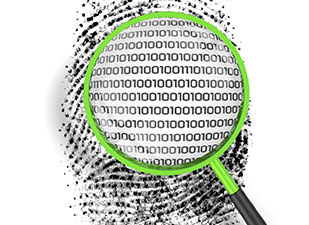- Our Story
- Publications & Resources
- Publications & Resources
- Publications
- IEEE Signal Processing Magazine
- IEEE Journal of Selected Topics in Signal Processing
- IEEE Signal Processing Letters
- IEEE Transactions on Computational Imaging
- IEEE Transactions on Image Processing
- IEEE Transactions on Information Forensics and Security
- IEEE Transactions on Multimedia
- IEEE Transactions on Signal and Information Processing over Networks
- IEEE Transactions on Signal Processing
- IEEE TCI
- IEEE TSIPN
- Data & Challenges
- Submit Manuscript
- Guidelines
- Information for Authors
- Special Issue Deadlines
- Overview Articles
- Top Accessed Articles
- SPS Newsletter
- SigPort
- SPS Resource Center
- Publications FAQ
- Blog
- News
- Dataset Papers
- Conferences & Events
- Community & Involvement
- Professional Development
- For Volunteers
- Information for Authors-OJSP
-
Home
Conferences Events IEEE Signal Processing Magazine IEEE SPL Article IEEE TIFS Article IEEE TMM Article IEEE TSP Article Jobs in Signal Processing Lectures Machine Learning Seasonal Schools Signal Processing News SPM Article SPS Distinguished Lectures SPS Newsletter Article SPS Webinar SPS Webinars SPS Webinar Series Webinar webinars
-
Our Story
What is Signal Processing?

The technology we use, and even rely on, in our everyday lives –computers, radios, video, cell phones – is enabled by signal processing. Learn More » -
Publications & Resources
-
SPS Resources
- Signal Processing Magazine The premier publication of the society.
- SPS Newsletter Monthly updates in Signal Processing
- SPS Resource Center Online library of tutorials, lectures, and presentations.
- SigPort Online repository for reports, papers, and more.
- SPS Feed The latest news, events, and more from the world of Signal Processing.
-
SPS Resources
-
Conferences & Events
-
Community & Involvement
-
Membership
- Join SPS The IEEE Signal Processing Magazine, Conference, Discounts, Awards, Collaborations, and more!
- Chapter Locator Find your local chapter and connect with fellow industry professionals, academics and students
- Women in Signal Processing Networking and engagement opportunities for women across signal processing disciplines
- Students Scholarships, conference discounts, travel grants, SP Cup, VIP Cup, 5-MICC
- Young Professionals Career development opportunities, networking
- Get Involved
-
Technical Committees
- Applied Signal Processing Systems
- Audio and Acoustic Signal Processing
- Bio Imaging and Signal Processing
- Computational Imaging
- Image Video and Multidimensional Signal Processing
- Information Forensics and Security
- Machine Learning for Signal Processing
- Multimedia Signal Processing
- Sensor Array and Multichannel
- Signal Processing for Communication and Networking
- Signal Processing Theory and Methods
- Speech and Language Processing
- Technical Working Groups
- More TC Resources
-
Membership
-
Professional Development
-
Professional Development
- Signal Processing Mentorship Academy (SigMA) Program
- Micro Mentoring Experience Program (MiME)
- Distinguished Lecturer Program
- Distinguished Lecturers
- Distinguished Lecturer Nominations
- Past Lecturers
- Distinguished Industry Speaker Program
- Distinguished Industry Speakers
- Distinguished Industry Speaker Nominations
- Industry Resources
- IEEE Training Materials
- Jobs in Signal Processing: IEEE Job Site
-
Career Resources
- SPS Education Program Educational content in signal processing and related fields.
- Distinguished Lecturer Program Chapters have access to educators and authors in the fields of Signal Processing
- Job Opportunities Signal Processing and Technical Committee specific job opportunities
- Job Submission Form Employers may submit opportunities in the area of Signal Processing.
-
Professional Development
-
For Volunteers
-
For Board & Committee Members
- Board Agenda/Minutes* Agendas, minutes and supporting documentation for Board and Committee Members
- SPS Directory* Directory of volunteers, society and division directory for Board and Committee Members.
- Membership Development Reports* Insight into the Society’s month-over-month and year-over-year growths and declines for Board and Committee Members
-
For Board & Committee Members
Popular Pages
Today's:
- Information for Authors
- (ICME 2026) 2026 IEEE International Conference on Multimedia and Expo
- IEEE Transactions on Information Forensics and Security
- IEEE Transactions on Image Processing
- IEEE Transactions on Multimedia
- Submit a Manuscript
- IEEE Transactions on Audio, Speech and Language Processing
- IEEE Journal of Selected Topics in Signal Processing
- Conference Call for Papers
- (ISBI 2026) 2026 IEEE 23rd International Symposium on Biomedical Imaging
- Signal Processing Cup
- Guidelines
- Information for Authors-SPL
- IEEE Transactions on Signal Processing
- Unified EDICS
All time:
- Information for Authors
- Submit a Manuscript
- IEEE Transactions on Image Processing
- IEEE Transactions on Information Forensics and Security
- IEEE Transactions on Multimedia
- IEEE Transactions on Audio, Speech and Language Processing
- IEEE Signal Processing Letters
- IEEE Transactions on Signal Processing
- Conferences & Events
- IEEE Journal of Selected Topics in Signal Processing
- Information for Authors-SPL
- Conference Call for Papers
- Signal Processing 101
- IEEE Signal Processing Magazine
- Guidelines
Last viewed:
- Information for Authors OJSP
- IEEE Signal Processing Magazine
- Membership
- PANNs: Large-scale Pretrained Audio Neural Networks for Audio Pattern Recognition
- IEEE Journal of Selected Topics in Signal Processing
- Guidelines
- IEEE Transactions on Image Processing
- IEEE Signal Processing Letters
- Information for Authors
- IEEE Transactions on Information Forensics and Security
- Submit a Manuscript
- Editorial Board
- Digital Edition-Content Gazette
- Guidelines for Reviewers
- (ISBI 2026) 2026 IEEE 23rd International Symposium on Biomedical Imaging
Recent Patents in Signal Processing (May 2018) – Face recognition
You are here
Newsletter Menu
Newsletter Categories
Top Reasons to Join SPS Today!
1. IEEE Signal Processing Magazine
2. Signal Processing Digital Library*
3. Inside Signal Processing Newsletter
4. SPS Resource Center
5. Career advancement & recognition
6. Discounts on conferences and publications
7. Professional networking
8. Communities for students, young professionals, and women
9. Volunteer opportunities
10. Coming soon! PDH/CEU credits
Click here to learn more.
News and Resources for Members of the IEEE Signal Processing Society
Recent Patents in Signal Processing (May 2018) – Face recognition
For our May 2018 issue, we cover recent patents granted in the area of face recognition.
Patent no. 9,959,455 presents a system for facial recognition comprising at least one processor; at least one input operatively connected to the at least one processor; a database configured to store three-dimensional facial image data comprising facial feature coordinates in a predetermined common plane; the at least one processor configured to locate three-dimensional facial features in the image of the subject, estimate three-dimensional facial feature location coordinates in the image of the subject, obtain the three-dimensional facial feature location coordinates and orientation parameters in a coordinate system in which the facial features are located in the predetermined common plane; and compare the location of the facial feature coordinates of the subject to images of people in the database; whereby recognition, comparison and/or likeness of the facial images is determined by comparing the predetermined common plane facial feature coordinates of the subject to images in the database. A method is also disclosed.
In patent no. 9,959,454 a face recognition device includes a processor configured to: extract a plurality of feature points of a face included in an input image; detect a first and a second feature points that are paired from among the plurality of the feature points, a third feature point that is away from a straight line that connects the first and the second feature points, and two inter-feature vectors starting from the third feature point to the respective first the second feature points; calculate a feature angle formed by the two detected inter-feature vectors; and perform face recognition based on the feature angle formed by the two inter-feature vectors included in face information that is previously set as the face targeted for recognition and based on the calculated feature angle.
In patent no. 9,940,506 a system and method for generating a descriptor for a face is provided. The descriptor is operable to generate information about a given region in a face image to enable face recognition. The descriptor provided herein is a low dimension relative to many existing descriptors providing similar face recognition accuracy. In another aspect, a system and method for face recognition is provided.
Embodiments of the invention no. 9,934,397 may involve a method, system, and computer program product for controlling privacy in a face recognition application. A computer may receive an input including a face recognition query and a digital image of a face. The computer may identify a target user associated with a facial signature in a first database based at least in part on a statistical correlation between a detected facial signature and one or more facial signatures in the first database. The computer may extract a profile of the target user from a second database. The profile of the target user may include one or more privacy preferences. The computer may generate a customized profile of the target user. The customized profile may omit one or more elements of the profile of the target user based on the one or more privacy preferences and/or a current context.
Patent no. 9,922,240 introduces a multilevel clustering for a face recognition process, where the first stage clustering is performed on each computing node, using the first x vector coefficients. From the resulting k clusters created in the first stage, a limited number of clusters are selected on which the second stage clustering is performed, using the next y vector coefficients. The search for a matching image is then limited to these selected clusters. Computational costs are reduced at the first stage clustering by using just the first x vector coefficients. Computational costs for the second stage clustering are also reduced by performing the second stage only with the limited number of clusters on a limited number of computing nodes. In this manner, the overall computational costs in the face recognition process is significantly reduced while maintaining a desired level of accuracy.
A face recognition method of the disclosure no. 9,898,648 includes configuring aggregations of feature data that include a plurality of feature data of faces and match to a plurality of personnel data; extracting from an input image a plurality of input feature data that correspond to the feature data and that is equal to or more than a critical value; comparing an aggregation of input feature data that includes the input feature data with each of the pre-stored aggregations of feature data, and selecting from the aggregations of feature data an aggregation of feature data having the greatest similarity with the aggregation of the input feature data; and identifying a person on the image based on personnel data that matches the aggregation of feature data having the greatest similarity.
In patent no. 9,875,398 a method and system in which facial image representations stored in a database are defined by facial coordinates in a plane common to other images in the database in order to facilitate comparison or likeness of the facial images by comparing the common plane facial coordinates, the common plane being determined by the locations of the eyes and mouth corners; at least one input operatively connected to the at least one processor and configured to input the corners of the eyes and mouth coordinates; the at least one processor configured to convert inputted coordinates for the corners of the eyes and mouth into estimated common plane coordinates by minimizing the error between the inputted corners of the eyes and mouth coordinates and the estimated coordinates corners of the eyes and mouth obtained from the least square estimation model of the common plane coordinates of the corners of eyes and mouth.
According to a method for providing a notification on a face recognition environment of the disclosure no. 9,864,756, the method includes obtaining an input image that is input in a preview state, comparing feature information for a face included in the input image with feature information for a plurality of reference images of people stored in a predetermined database to determine, in real-time, whether the input image satisfies a predetermined effective condition for photographing. The predetermined effective condition for photographing is information regarding a condition necessary for recognizing the face included in the input image at a higher accuracy level than a predetermined accuracy level. The method further includes providing a user with a predetermined feedback for photographing guidance that corresponds to whether the predetermined effective condition for photographing is satisfied. According to the method, a condition of a face image detected for face recognition is checked, and if there is an unsuitable element in recognizing the face, it is notified to a user such that an obstruction environment hindering the face recognition by the user is removed, for enhancing a success rate of the face recognition.
If you have an interesting patent to share when we next feature patents related to face recognition, or if you are especially interested in a signal processing research field that you would want to be highlighted in this section, please send email to Csaba Benedek (benedek.csaba AT sztaki DOT mta DOT hu).
References
Number: 9,959,455
Title: System and method for face recognition using three dimensions
Inventors: Young; Shiqiong Susan (Bethesda, MD), Ye; Jinwei (Elkton, MD)
Issued: May 1, 2018
Assignee: The United States of America as represented by the Secretary of the Army (Washington, DC)
Number: 9,959,454
Title: Face recognition device, face recognition method, and computer-readable recording medium
Inventors: Ohbitsu; Toshiro (Akishima, JP)
Issued: May 1, 2018
Assignee: Fujitsu Limited (Kawasaki, JP)
Number: 9,940,506
Title: System and method for face recognition
Inventors: Fazl Ersi; Ehsan (Toronto, CA), Tsotsos; John Konstantine (Richmond Hill, CA)
Issued: April 10, 2018
Number: 9,934,397
Title: Controlling privacy in a face recognition application
Inventors: Calo; Seraphin B. (Cortlandt Manor, NY), Ko; Bong Jun (Harrington Park, NJ), Lee; Kang-Won (Seoul, KR), Salonidis; Theodoros (Boston, MA), Verma; Dinesh C. (New Castle, NY)
Issued: April 3, 2018
Assignee: International Business Machines Corporation (Armonk, NY)
Number: 9,922,240
Title: Clustering large database of images using multilevel clustering approach for optimized face recognition process
Inventors: Asati; Somnath (Chhatarpur, IN), Eshwar; Bhavani K. (Bangalore, IN), Naganna; Soma Shekar (Bangalore, IN), Seth; Abhishek (Uttar Pradesh, IN), Tomar; Vishal (Meerut, IN)
Issued: March 20, 2018
Assignee: International Business Machines Corporation (Armonk, NY)
Title: Face recognition method
Inventors: Oh; Sang Yoon (Daejeon, KR)
Issued: February 20, 2018
Assignee: Electronics And Telecommunications Research Institute (Daejeon, KR)
Number: 9,875,398
Title: System and method for face recognition with two-dimensional sensing modality
Inventors: Young; Shiqiong Susan (Bethesda, MD)
Issued: January 23, 2018
Assignee: The United States of America as represented by the Secretary of the Army (Washington, DC)
Number: 9,864,756
Title: Method, apparatus for providing a notification on a face recognition environment, and computer-readable recording medium for executing the method
Inventors: Park; Minje (Seongnam, KR), Kim; Tae-Hoon (Seoul, KR)
Issued: January 9, 2018
Assignee: Intel Corporation (Santa Clara, CA)
Open Calls
| Nomination/Position | Deadline |
|---|---|
| Call for Nominations for the SPS Chapter of the Year Award | 15 October 2025 |
| Call for Papers for 2026 LRAC Workshop | 22 October 2025 |
| Submit Your 2026 ICASSP Workshop Paper | 22 October 2025 |
| Submit a Proposal for ICASSP 2030 | 31 October 2025 |
| Call for Project Proposals: IEEE SPS SigMA Program - Signal Processing Mentorship Academy | 2 November 2025 |
| Submit Your Proposals for 2026 Member-Driven Initiatives | 21 November 2025 |
| IEEE Signal Processing Society Annual Election Opens on 17 October | 4 December 2025 |
PhD Theses
- Design Space Exploration for Signal Processing Systems Using Lightweight Dataflow Graphs
- Cost-Effective Algorithms to Obtain, Predict and Apply Location Information for Mobile Computing
- Shared Keystroke Data for Continuous Authentication - Generation and Analysis
- Associative Pattern Recognition for Biological Regulation Data
Society News
- New SPS Technical Interest Profile Codes
- Job Opportunities in Signal Processing
- Nominations Open for 2018 SPS Awards
- Call for Nominations: Distinguished Industry Speakers and Distinguished Lecturers
- Call for Nominations: Chapters Committee Chair, Education Committee Chair, and Seasonal Schools Subcommittee Chair
Publications News
Conferences & Events
SPS Social Media
- IEEE SPS Facebook Page https://www.facebook.com/ieeeSPS
- IEEE SPS X Page https://x.com/IEEEsps
- IEEE SPS Instagram Page https://www.instagram.com/ieeesps/?hl=en
- IEEE SPS LinkedIn Page https://www.linkedin.com/company/ieeesps/
- IEEE SPS YouTube Channel https://www.youtube.com/ieeeSPS
Home | Sitemap | Contact | Accessibility | Nondiscrimination Policy | IEEE Ethics Reporting | IEEE Privacy Policy | Terms | Feedback
© Copyright 2025 IEEE - All rights reserved. Use of this website signifies your agreement to the IEEE Terms and Conditions.
A public charity, IEEE is the world's largest technical professional organization dedicated to advancing technology for the benefit of humanity.








